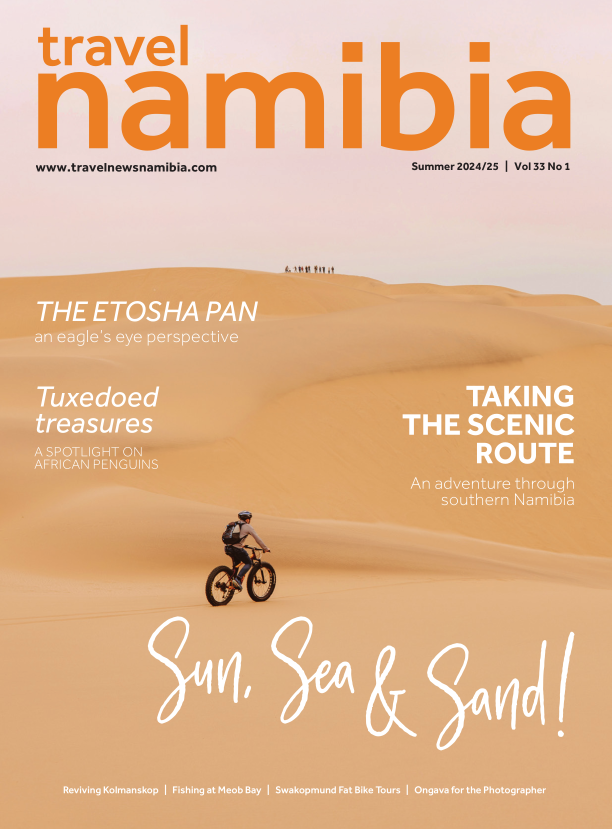
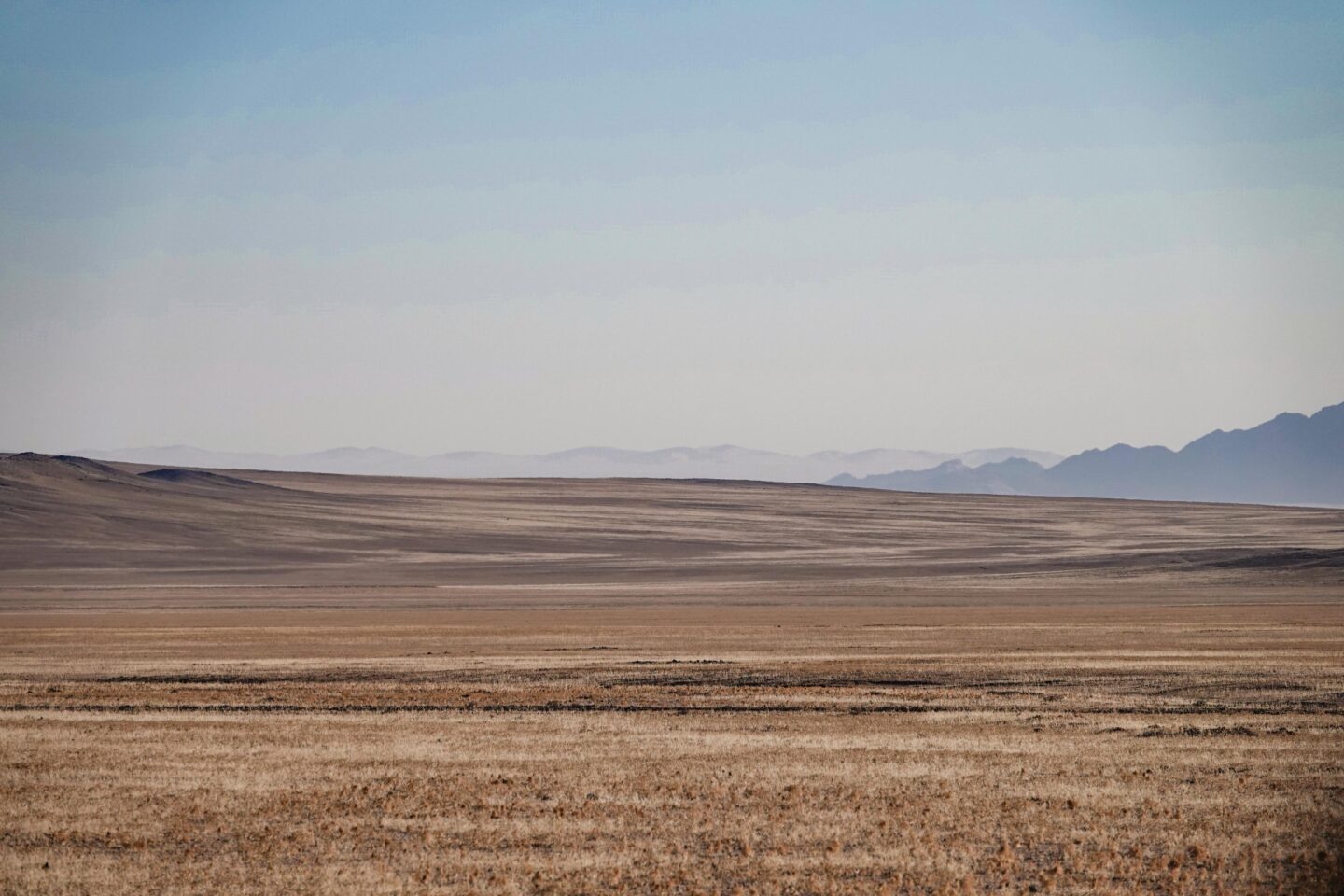
Taking the
scenic route
An adventure through southern Namibia from sea to sand
What touches your soul? What intrigues you? What allows you to unleash the spirit of adventure? Taking a moment to savour the things you love is one of the greatest pleasures of a self-drive exploration adventure. Every road you travel is filled with surprises – captivating people, fascinating stories and intriguing places just waiting to be discovered. This was Kirsty Watermeyer’s experience while travelling through southern Namibia.
From the Summer 2024/25 issue
Beginning on the B4, a road that stretches westward from Keetmanshoop to Lüderitz, you witness a captivating transformation of the landscapes along the way. As you travel beyond the grassy plains into the mesmerising expanse of the Namib Desert, the changing sands sketch vast artworks across the horizon. Here, roads weave through extraordinary scenery, spellbinding colours and expansive stretches that offer a welcome, underrated space to breathe.
As you enter the Lüderitz district, the land opens in colours of peach and purple sands that wash up against a backdrop of black mountains. You can feel that this land has witnessed its share of history; the remnants carrying both weight and wisdom.
Driving through Aus on the way to Lüderitz reveals an exquisite stretch of road. I find myself wondering what the first humans must have thought upon arriving in this breathtaking landscape. Today, the landscape resembles a watercolour painting, with hazy light illuminating valleys of varying sand colours and pointed outcrops of dark stone. It is picturesque in every direction.
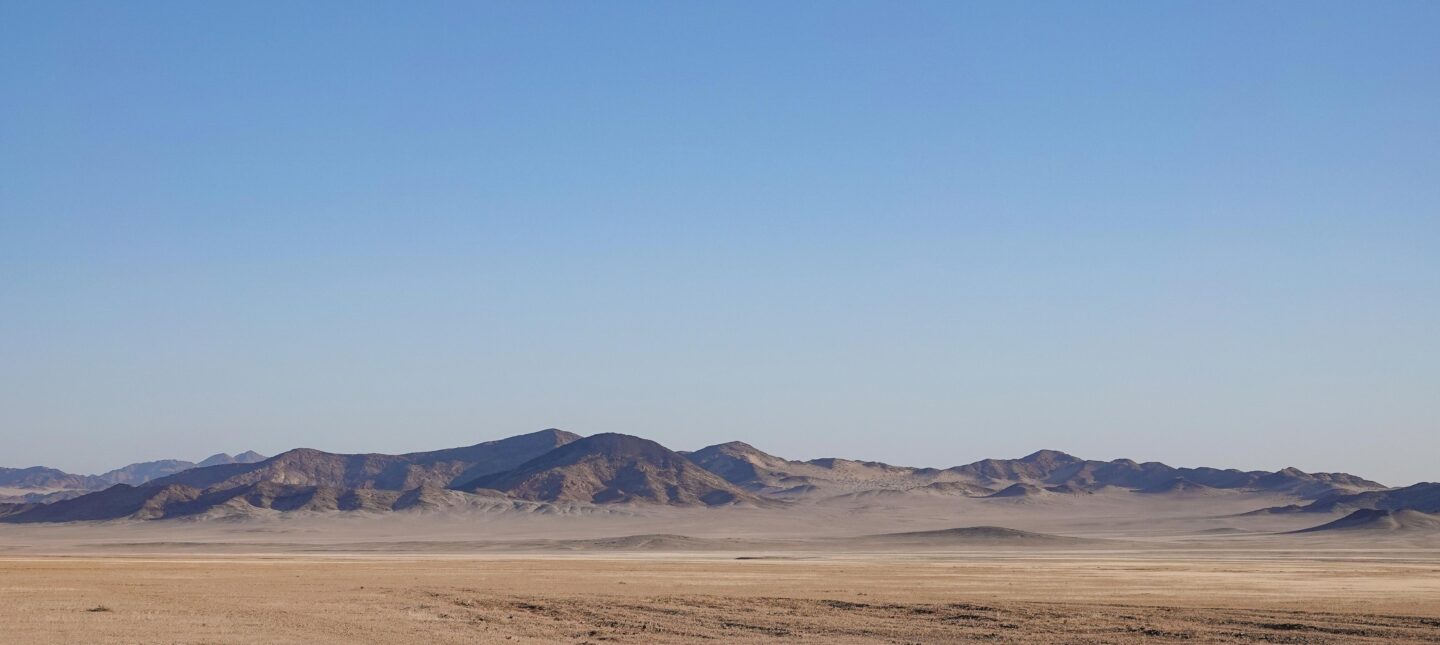
STOPOVER IN AUS: A GLIMPSE INTO NAMIBIA’S PAST
In Namibia’s southern desert, the small town of Aus is rich in history. Its name is believed to originate from the Khoikhoi word for “a place of snakes”. It is unclear why this name was given, because while there are some snakes in the area (like in most parts of Namibia), abundant populations are not typically found here.
During World War I, Aus served as a prisoner-of-war (POW) camp for over 1,500 German soldiers who surrendered to South African forces, marking the final chapter of German colonial rule in Namibia.
A visit to the Aus-Commonwealth Cemetery is an intriguing one, honouring those who perished during the 1918 Spanish flu pandemic. As we know too well from recent events, the illness does not discriminate – here, you will find prisoners and guards buried side by side. Interestingly, not all graves in the cemetery are linked to the POW camp, as some belong to soldiers who died in skirmishes in the area during 1915. While there, look out for the grave of Mary Ann “Breeza” Nelson, a dedicated nurse who lost her life while aiding others and was buried with military honours.
In the 1950s, Aus thrived due to the booming Karakul sheep industry. However, by the 1980s, the industry collapsed, and when the diamond trade moved south, many locals and businesses left. Today, tourism is slowly revitalising the economy.
Aus is known for its wild horses that roam the surrounding areas. Believed to be descendants of those from the German Schutztruppe, the barren plains of Garub, just 20 km from Aus, provide an excellent vantage point to observe these unfenced, unbridled horses living a life of ultimate freedom in the vast desert environment.
Adventures in Lüderitz
THE RISE AND FALL OF FORTUNES AND TIDES
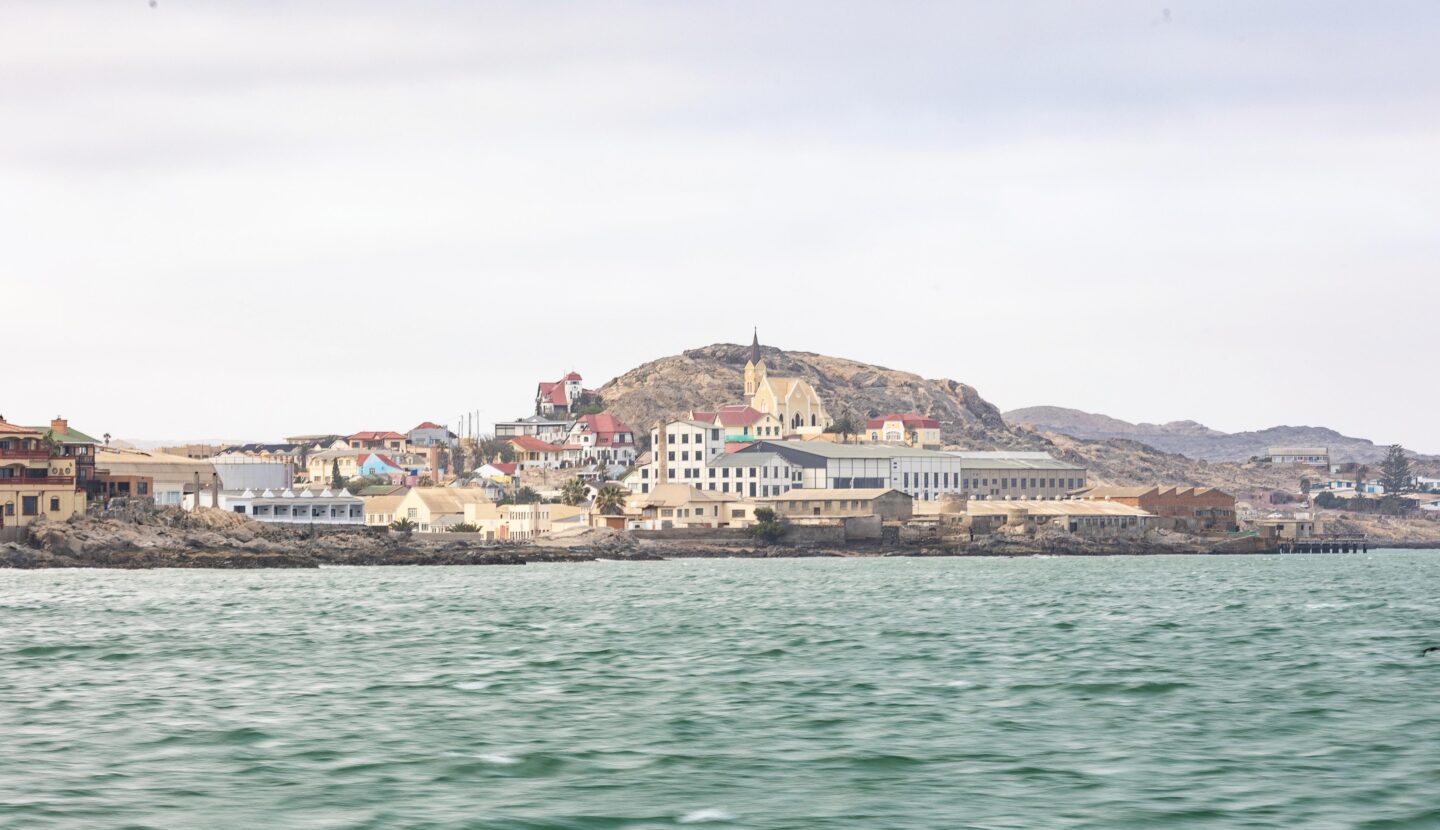
It has been a while since I last set foot in Lüderitz, and this quaint Namibian coastal town has seen considerable development since my previous visit. However, it still retains its unique charm, friendly inhabitants and remarkable access to the ocean.
Visiting the town is like stepping into the pages of a history book. A wealth of heritage buildings dots the town, 191 of which are of historical significance according to a survey done in 1984. A pro tip is to look out for the blue and white enamel street numbers, which is a quick way to identify heritage buildings.
Lüderitz has witnessed many fortune seekers come and go over the years, with stories that have shaped the town as much as the sea and desert dunes that surround it. Its fate has always been closely tied to the treasures mined on land and in the sea here.
Here, history is marked by rises and falls, much like the rise and fall of the tides. There was the guano rush of 1842, a time when murder was committed over harvesting rights. Then there was the diamond rush when the first diamond was found in 1908, which preceded a collapse of the local economy when diamond mining shifted further south in 1928. Now, with the recent announcement of oil found offshore, there is once again renewed interest in the town, and many a modern-day “gold-rusher” is looking to make a fortune once more.
Interestingly, modern amenities like barista-style coffee shops are already emerging, signalling a town on the brink of revival. New restaurants and a renewed focus on tourism offerings can be seen wherever you look.
Still, perhaps my favourite aspect of Lüderitz is its proximity to the ocean. We stayed at the Lüderitz Nest Hotel, which has undergone a major revamp since I last visited. Beyond the luxurious comforts, the sound of the ocean crashing against the shore while you sleep is an undervalued treasure that is hard to find.
SOLITUDE IS THE MODERN LUXURY
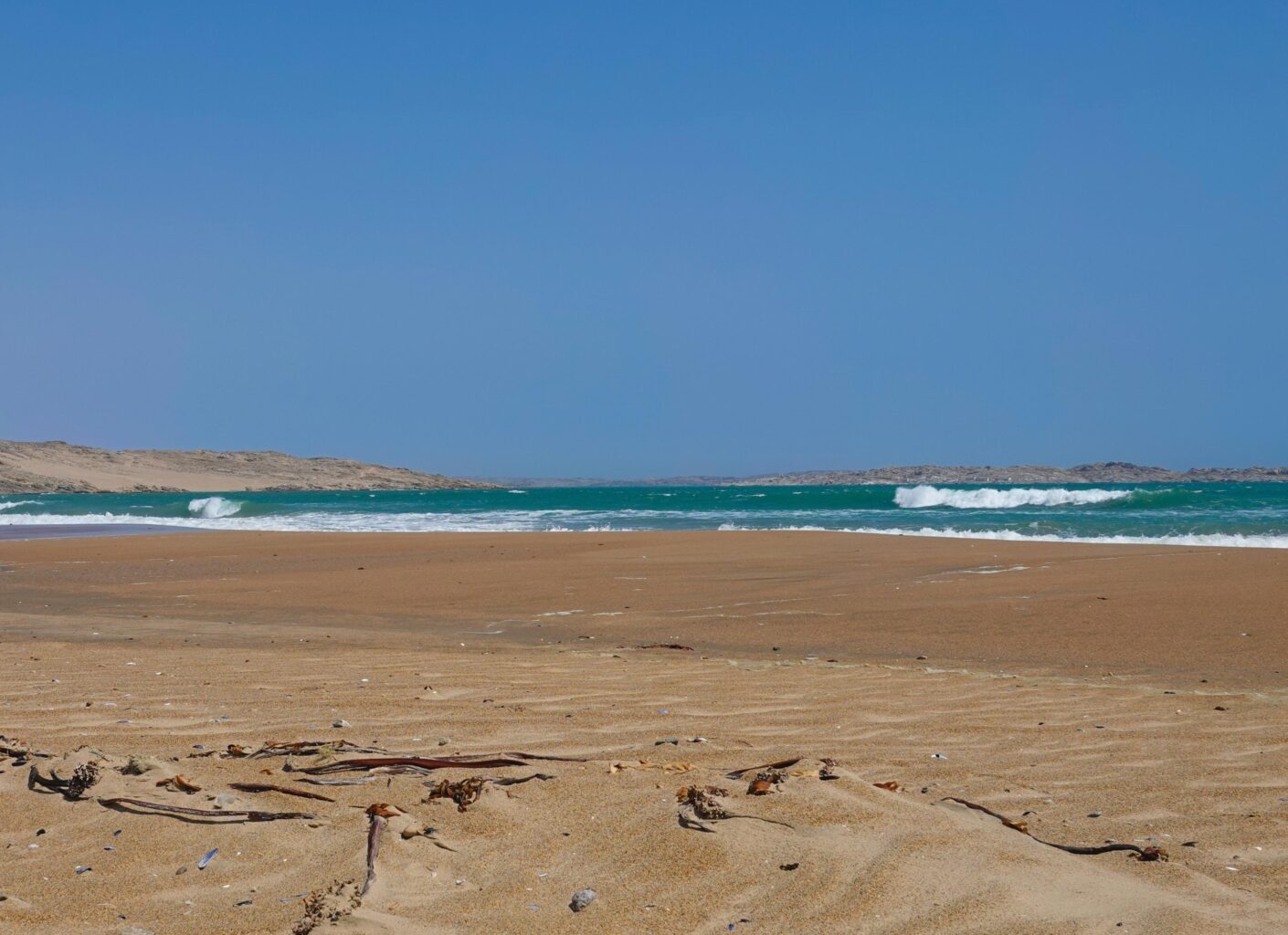
“It is rare, monumental and spectacular; a kind of soul therapy that can easily be labelled as priceless.”
Located just 8 km north of Lüderitz, Agate Beach is easily accessible and comes highly recommended by the locals. This stunning stretch of sandy shore is nestled in a bay surrounded by sweeping desert dunes, with Seal Island just offshore. The water is calm, making it an ideal spot for long, leisurely walks along the shoreline. Many visitors come here to hunt for the famous agate stones, which means that if you come across other people, they will likely have their eyes glued to the ground, searching for these semi- precious gems. It is a pity, because the surrounding view is just as captivating.
On the way to Agate Beach, you will pass by a salt pan that attracts a vibrant community of greater and lesser flamingos, gathering there in colourful camaraderie.
The highlight for me was the solitude of this beach, with only the sound of waves crashing rhythmically on the shore creating a noisy quiet. Nature blocks out everything but the sound of itself. Turquoise waters and desolate dune sands all around create a stark contrast of colours. Walking on the beach, I am the only living being far and wide, except for the seagulls. There are no footprints in the sand. It is rare, monumental and spectacular; a kind of soul therapy that can easily be labelled as priceless.
CRUISING THE COAST
A must-do activity in Lüderitz is a boat trip around the bay to Halifax Island, home to the endangered African Penguin. We set off from Robert Harbour aboard the Zeepaard on a crisp morning, bundled up in extra jackets, as advised by seasoned travellers. Our captain, Heiko Metzger, greets us warmly and provides a brief safety overview before we embark.
As we pull away from the harbour, the stunning view of Shark Island comes into focus, and Heiko points out the recently erected memorial commemorating the genocide that took place there. Once out at sea, the strong Atlantic winds pick up, and soon we pass Shearwater Bay, with the Lüderitz lighthouse becoming visible.
Heiko shares intriguing tales of the lighthouse keepers’ houses, now abandoned and weathered by time. Each structure stands as a poignant reminder of how this part of Namibia wears its history like emblems – beautiful scars that narrate the stories of its past.
Navigating around Dias Point, the waves roar as our catamaran battles the powerful sea to move us forward. After a swift 45-minute cruise, we arrive at Halifax Island, eager to encounter its charming inhabitants. Heiko holds the boat close to shore, giving us time to observe the penguins in their natural habitat while sharing captivating stories about the area’s rich history. With years of experience at sea, he answers every question from our group with fascinating detail.
This moment on the shoreline of Halifax Island is deeply affecting. As we bob along in the ocean, we watch these delightful creatures and realise that they could soon be gone forever. The African Penguin population has dwindled dramatically, and experts predict they may face extinction within the next decade. The gravity of this reality truly deepens one’s appreciation for the experience of seeing them in their natural habitat.
On our way back to the harbour, our group is quieter, deep in thought about what we have just witnessed… A mood only lifted by dolphins jumping in the wake of the boat! What a treat to see these two Heaviside’s dolphins, which are only found in a limited section of the African coastal waters. Their playful nature lifts the fog, reminding us that the beauty of Namibian wildlife is not limited to land alone, and we should be equally active in protecting the future of our marine life.
A HISTORY ETCHED IN STONE
“Do not be lured into thinking the fun is only at Dias Point, because the journey there is every bit as engaging.”
An often-recommended activity to do in Lüderitz is a drive to Dias Point, where history and nature collide. In 1488, Bartolomeu Dias, the intrepid Portuguese explorer, sailed into what we now know as Lüderitz Bay on his way back from a groundbreaking voyage around the Cape of Good Hope. To mark his visit, he placed an engraved stone and a cross on a rocky outcrop, standing defiantly against the gale-force winds and crashing surf.
The winds here can be fierce, and those who make the trek up the rocks to visit the landmark will surely return windswept and splashed with salty ocean spray, a reminder of nature’s raw power.
Do not be lured into thinking the fun is only at Dias Point, because the journey there is every bit as engaging. The Lüderitz area boasts the oldest rocks along the Namibian coast, with the Namaqua Metamorphic Complex dating back approximately 1,200 million years. Today, these ancient formations include coarse-grained metamorphic rock that consists of layers of different minerals, which originated from sediments deposited in a prehistoric sea that once lay between land masses before merging to form the Gondwana supercontinent. Each rock formation offers a glimpse into the ancient processes that have shaped this rugged landscape – distinctive shapes revealing a fascinating history etched in stone.
Driving to the desert along the D707
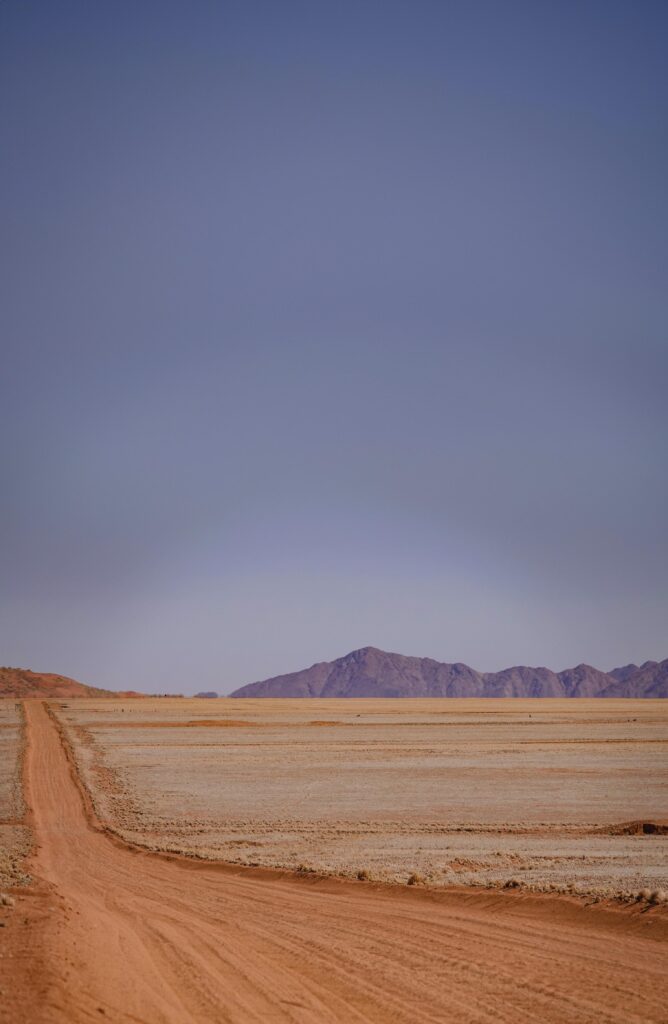
Leaving Lüderitz is a bittersweet experience, tinged with the thrill of the journey ahead. We find ourselves back on the B4, heading towards Aus, but just past the town, we veer off to explore the scenic route to Sossusvlei. This detour promises to unveil yet another breathtaking chapter of Namibia’s stunning landscapes, another epic route of endless horizons.
The real treat is the D707, where the red dunes of the Namib roll to your left and the Tiras Mountains tower to your right. This is the route via Betta that will get you to the desert. As we drive through this exquisite land, I find myself gasping regularly at the unfurling vista around each bend. The sand is the colour of a ripened peach sprinkled on black mountain outcrops.
In certain stretches, the road becomes slippery as we traverse thick desert sand, while in others, it shifts to pure gravel. It is essential to brush up on your sand driving skills before embarking on this route, as the varied terrain can be challenging but rewarding.
We are travelling to Kulala Desert Lodge, situated on the edge of the Namib Desert. With stunning surroundings and luxurious accommodations, this is the ultimate gateway to Sossusvlei. After a few days of enjoying the majestic desert, we will return to the capital city, Windhoek, using only gravel roads to get there.
Gravel roads are the unsung heroes of adventure travel; the paths that make one slow down. Inviting exploration and curiosity, the slower pace fosters a deeper appreciation for the journey. In a world that constantly pushes us to speed up, gravel roads encourage us to embrace a more relaxed pace, and that is why I love gravel roads.
Leaving the iconic dunes of Sossusvlei behind, the journey takes us through the captivating and ever-changing rugged mountains of the Central Highlands of Namibia. Taking the C26, we are surprised to see that many travellers had the same idea that we did.
Remember to go slow on gravel roads, because the wildlife has right of way. We had the treat of seeing a herd of kudu cross the road, ever watchful and suspicious of us, until they decided that we were indeed waiting for them to cross first. These graceful antelopes are incredibly alert, which adds to the thrill of the encounter. If they sense danger, they stand still, ears perked, before bounding away with surprising speed and agility.
There are many reasons to take the scenic route and visit the south of Namibia, for example the warmth of the people and the endless possibilities to explore. For me, it is all this and the breathtaking transformation of landscapes that truly captivate my heart. From the sweeping sand dunes to expansive plains and rugged mountains, every turn reveals a new spectacle of nature. This is an enchanting region that leaves an indelible mark, reminding us of the beauty and resilience of nature and the life that unfolds within it. TN
More to explore


Discover Airlines launches a new direct flight between Windhoek and Munich
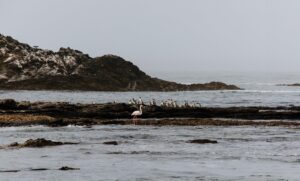
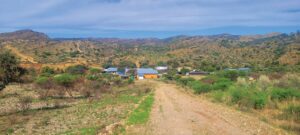


Discover Airlines launches a new direct flight between Windhoek and Munich





